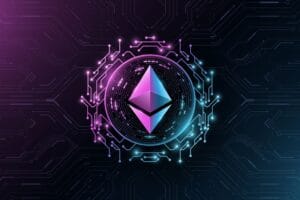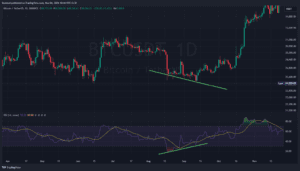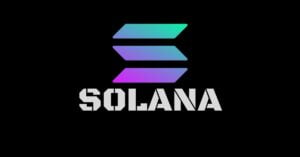Introduction
Imagine a blockchain network that combines high-speed transactions, low fees, and seamless interoperability—all while empowering developers to build decentralized applications with ease. Binance Smart Chain (BSC), launched by the global cryptocurrency exchange Binance, has rapidly emerged as a leading platform in the decentralized finance (DeFi) space. Paired with its native cryptocurrency, Binance Coin (BNB), BSC is transforming the blockchain landscape by offering scalable solutions that address the limitations of earlier networks like Ethereum.
In this comprehensive article, we’ll delve into the history of BSC and BNB, explore the innovative technology behind them, and examine their profound impact on the blockchain ecosystem.
The Origins of Binance Smart Chain: Expanding the Binance Ecosystem
The Binance Ecosystem
Founded in 2017 by Changpeng Zhao (CZ), Binance quickly ascended to become one of the world’s largest cryptocurrency exchanges. Offering a plethora of services—including spot trading, futures, staking, and lending—Binance established itself as a one-stop-shop for crypto enthusiasts.
However, as the DeFi movement gained momentum, existing blockchains like Ethereum began grappling with scalability issues:
- High Transaction Fees: Network congestion led to exorbitant gas fees.
- Slow Processing Times: Increased usage resulted in delayed transaction confirmations.
- Limited Scalability: The underlying infrastructure couldn’t support the surge in DeFi applications.
Recognizing these challenges, Binance sought to create a solution that would offer high performance without sacrificing decentralization.
The Birth of Binance Chain
In April 2019, Binance launched Binance Chain, a high-speed blockchain optimized for fast transactions and designed to power the Binance DEX (Decentralized Exchange).
Key Features of Binance Chain:
- Fast Transaction Processing: Capable of handling thousands of transactions per second.
- Simplified Trading Experience: Facilitated the issuance, exchange, and transfer of blockchain assets.
- Limited Smart Contract Functionality: Focused primarily on trading, lacking the flexibility for complex DApps.
While Binance Chain excelled in speed and efficiency, it couldn’t support the burgeoning demand for decentralized applications and smart contracts.
The Launch of Binance Smart Chain (BSC)
To bridge this gap, Binance introduced Binance Smart Chain (BSC) on September 1, 2020.
BSC’s Objectives:
- Smart Contract Support: Fully compatible with the Ethereum Virtual Machine (EVM).
- Dual-Chain Architecture: Operates parallel to Binance Chain, allowing seamless asset transfers.
- High Performance: Offers low latency and high throughput, ideal for DeFi applications.
By enabling smart contract functionality and maintaining interoperability with Binance Chain, BSC positioned itself as a formidable competitor in the blockchain space.
How Binance Smart Chain Works: The Technology Behind BSC
Dual-Chain Architecture
BSC’s dual-chain architecture allows users to enjoy the best of both worlds:
- Binance Chain: Optimized for ultra-fast trading.
- Binance Smart Chain: Focused on programmable transactions and smart contracts.
Benefits:
- Asset Interoperability: Easy transfer of assets between chains.
- Flexible Development: Developers can build DApps with more freedom and efficiency.
- User Convenience: Provides a seamless experience across different blockchain functionalities.
Proof of Staked Authority (PoSA)
BSC employs a unique consensus mechanism called Proof of Staked Authority (PoSA), which combines elements of Proof of Stake (PoS) and Proof of Authority (PoA).
How PoSA Works:
- Validators: A limited number of validators (up to 21) are chosen based on their staked BNB holdings and reputation.
- Block Production: Validators take turns producing blocks in a predetermined order.
- Rewards: Validators earn transaction fees as rewards, without additional inflationary block rewards.
Advantages of PoSA:
- High Efficiency: Supports approximately 100 transactions per second (TPS).
- Low Fees: Transaction fees are significantly lower than those on Ethereum.
- Environmentally Friendly: Does not require energy-intensive mining equipment.
EVM Compatibility and Smart Contracts
BSC is fully compatible with the Ethereum Virtual Machine (EVM).
Implications:
- Ease of Migration: Ethereum-based DApps can be ported to BSC with minimal changes.
- Developer-Friendly: Utilizes familiar tools like Remix, Truffle, and MetaMask.
- Language Support: Smart contracts are written in Solidity and Vyper.
This compatibility has led to a rapid expansion of the BSC ecosystem, as developers leverage existing knowledge and tools to build on BSC.
Cross-Chain Interoperability
BSC supports cross-chain communication and asset transfers through:
- Binance Bridge:
- Function: Allows users to convert crypto assets into and out of BSC-compatible tokens.
- Supports: Multiple blockchains including Ethereum, Bitcoin, and TRON.
- Pegged Tokens:
- Description: Tokens on BSC that are pegged to assets on other blockchains.
- Use Case: Enables liquidity and interoperability across different networks.
| Feature | Description |
|---|---|
| Dual-Chain Architecture | Combines Binance Chain and BSC for optimal performance |
| PoSA Consensus | Efficient, low-cost, and environmentally friendly |
| EVM Compatibility | Supports Ethereum tools and smart contracts |
| Cross-Chain Interoperability | Facilitates asset transfers between BSC and other blockchains |
Binance Coin (BNB): The Native Cryptocurrency of Binance Smart Chain
The Origins of BNB
Binance Coin (BNB) was launched in 2017 as an ERC-20 token on the Ethereum blockchain during Binance’s Initial Coin Offering (ICO).
Initial Purpose:
- Utility Token: Provided discounted trading fees on the Binance exchange.
- Token Burn Mechanism: Binance committed to burning a portion of BNB quarterly to reduce supply.
Transition to Binance Chain and BSC
In April 2019, BNB migrated to become the native token of Binance Chain.
Significance:
- Native Asset: BNB became integral to the Binance ecosystem.
- Expanded Use Cases: Beyond trading fee discounts, BNB started to power various applications.
With the launch of BSC, BNB’s role expanded further:
- Transaction Fees: Used to pay gas fees on BSC.
- Staking: Validators are required to stake BNB.
- Governance: BNB holders can participate in on-chain governance proposals.
Use Cases of BNB
BNB has evolved into a multi-purpose token with diverse applications:
- Transaction Fees:
- Binance Exchange: Discounts on trading fees.
- Binance Smart Chain: Payment for gas fees in DApps.
- Staking and Validation:
- Validators: Stake BNB to secure the network and earn rewards.
- Delegators: Users can delegate BNB to validators for a share of rewards.
- Token Sales and Launchpads:
- Binance Launchpad: BNB is used to participate in token sales of new projects.
- Payment Method:
- Merchant Adoption: Accepted by various merchants and service providers.
- DeFi Participation:
- Yield Farming: Used in liquidity pools on platforms like PancakeSwap.
- Lending and Borrowing: Collateral for loans on platforms like Venus.
BNB Burn Mechanism
Binance commits to reducing the total supply of BNB through a quarterly burn:
- Mechanism: Binance buys back and burns BNB equivalent to a portion of its quarterly profits.
- Objective: Reduce total supply from 200 million to 100 million BNB.
- Impact: Creates a deflationary effect, potentially increasing the token’s value over time.
The Rise of Binance Smart Chain Ecosystem: DeFi, NFTs, and Beyond
Decentralized Finance (DeFi) on BSC
BSC has become a hotspot for DeFi projects due to its scalability and low fees.
Notable DeFi Platforms:
- PancakeSwap:
- Type: Decentralized Exchange (DEX) and Automated Market Maker (AMM).
- Features: Swapping, staking, yield farming, and lottery.
- Unique Selling Point: Gamified experience with NFTs and collectible tokens.
- Venus:
- Type: Algorithmic money market and synthetic stablecoin protocol.
- Services: Lending, borrowing, and earning interest on assets.
- Autofarm:
- Type: Yield optimizer.
- Function: Aggregates yields from various DeFi platforms to maximize returns.
Advantages of DeFi on BSC:
- Low Transaction Costs: Fees are often less than $0.10.
- High-Speed Transactions: Near-instant confirmations enhance user experience.
- Interoperability: Easy integration with other blockchains and tokens.
Non-Fungible Tokens (NFTs) on BSC
The NFT craze has also permeated BSC, with numerous platforms and marketplaces emerging.
Prominent NFT Platforms:
- BakerySwap:
- Type: DEX and NFT marketplace.
- Features: NFT creation and trading, launchpad for new projects.
- Binance NFT Marketplace:
- Launched: June 2021.
- Offerings: Premium events, mystery boxes, and a marketplace for creators.
- Battle Pets:
- Type: Blockchain-based game.
- Concept: Players collect and battle with pet NFTs.
Why NFTs on BSC?
- Affordability: Low minting and transaction fees encourage participation.
- Accessibility: User-friendly platforms attract a broader audience.
- Speed: Quick transactions enhance gaming and trading experiences.
The Role of BSC in Web 3.0
BSC is poised to be a significant player in the evolution of Web 3.0, characterized by decentralized internet services.
Contributions to Web 3.0:
- Decentralized Applications: Supports a wide array of DApps beyond finance, including social media and gaming.
- Interoperability Solutions: Facilitates cross-chain communication essential for a decentralized web.
- Community Governance: Empowers users to participate in decision-making processes.
| Sector | BSC Contributions |
|---|---|
| DeFi | Low fees and high-speed transactions for financial services |
| NFTs | Affordable minting and trading of digital assets |
| Web 3.0 | Infrastructure supporting decentralized internet services |
Challenges and Future Outlook for Binance Smart Chain
Centralization Concerns
Despite its successes, BSC faces criticism regarding centralization:
- Validator Count: Limited to 21 validators, which is fewer than other networks like Ethereum.
- Validator Selection: Binance has significant influence over validator selection due to large BNB holdings.
- Implications: Potential vulnerabilities to censorship and governance manipulation.
Addressing Centralization:
- Community Initiatives: Encouraging more participants to become validators.
- Transparency Efforts: Providing clearer information about validator operations.
Network Congestion and Scalability
As BSC’s popularity surges, the network sometimes experiences:
- Congestion: Increased usage leads to slower transaction processing.
- Rising Fees: While still lower than Ethereum, fees can spike during peak times.
Potential Solutions:
- Layer-2 Scaling: Implementing off-chain solutions to alleviate mainnet pressure.
- Protocol Upgrades: Enhancing the network’s capacity and efficiency.
Competition from Other Blockchains
BSC competes with several other platforms aiming to solve similar problems:
- Ethereum 2.0: Transitioning to Proof of Stake to improve scalability.
- Solana: Offers high throughput and low latency.
- Polygon (formerly Matic Network): Provides layer-2 scaling solutions for Ethereum.
Maintaining a Competitive Edge:
- Continuous Innovation: Investing in research and development.
- Ecosystem Expansion: Attracting more developers and projects.
- Strategic Partnerships: Collaborating with other networks and service providers.
Conclusion
Binance Smart Chain (BSC) and Binance Coin (BNB) have undeniably reshaped the blockchain ecosystem by addressing critical issues of scalability, speed, and cost. Through innovative technology and strategic positioning, BSC has become a hub for DeFi, NFTs, and beyond.
While challenges related to centralization and network scalability persist, Binance’s commitment to development and adaptation suggests a promising future. As the blockchain industry evolves, BSC and BNB are well-positioned to continue playing pivotal roles in shaping the decentralized digital landscape.
Resources
For those interested in exploring Binance Smart Chain and Binance Coin further, consider the following resources:
- Binance Smart Chain Documentation
- Binance Official Website
- Binance Academy
- Binance Smart Chain GitHub Repository
- BSCScan (Block Explorer)
- Binance Research Reports
Tags: Binance Smart Chain, BNB, blockchain technology, Proof of Staked Authority, decentralized finance, DeFi, non-fungible tokens, NFTs, Binance ecosystem, Web 3.0, blockchain scalability, cryptocurrency





No comment yet, add your voice below!